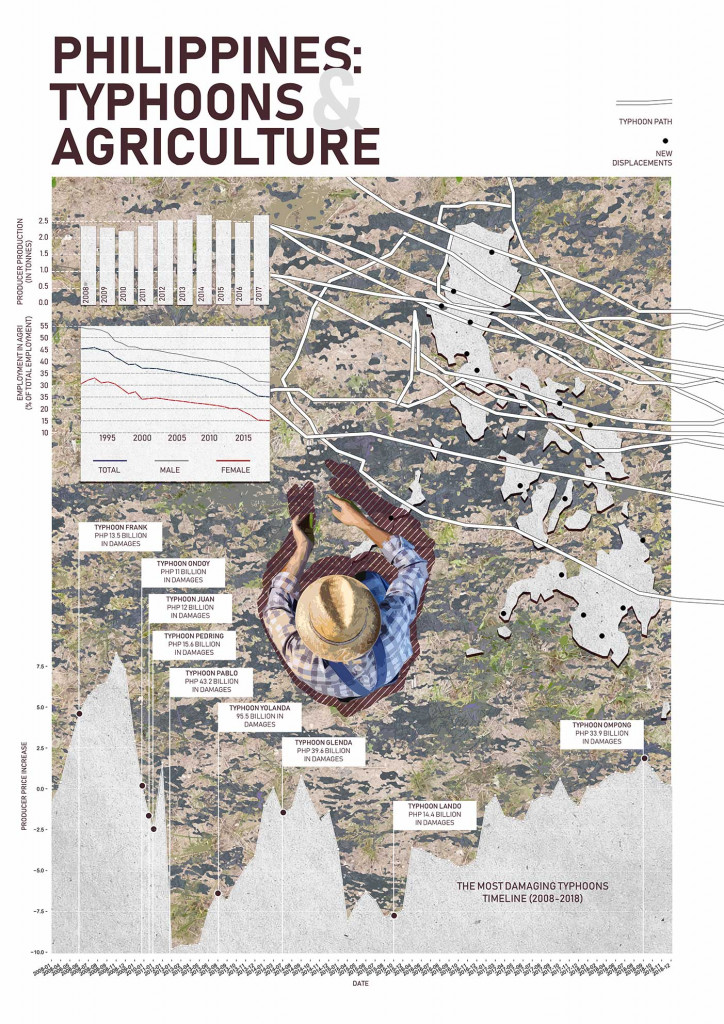Philippines: Agriculture & Typhoons
In the line of damage
The Philippines is a prominently agricultural country. However, it also surpasses China as the world’s biggest rice importer as of 2019. This comes off as a very big concern and the Philippine agriculture crisis becomes more evident. Multiple factors piled up contributed to this turnabout; most of the time, caused by circumstances that farmers cannot possibly control. For instance, the frequency of typhoon landfalls affects production in a span that could range years. A large portion of typhoon damages in the Philippines is related to producer industries. The effects are observable when looking at producer production and producer price trends in relation to typhoon damages.
Disastrous encounters
Filipino farmers also have to be wary of a new kind of “force majeure” which hides in the cloaks of the National Government. With profits being pushed back due to irreversible crop damages, it doesn’t help that the agricultural industry is being looked down on by people in significant government positions. As the industry is constantly in the line of damage, by natural and ‘human’ calamities, it has come to the point wherein the pay off is no longer worth the taxing efforts of farming. As a result, a lot of people from the agricultural sector are now veering towards a more stable one.

Dataset: The World Bank Data, Humanitarian Data Exchange, SimpleMaps
Other References: Business Inquirer
Philippines: Agriculture and Typhoons is a project of IaaC, Institute for Advanced Architecture of Catalonia
developed at Master in City & Technology in (2019/2020) by:
Student: Rovianne Santiago
Faculties: Diego Pajarito